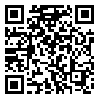Wed, Dec 17, 2025
[Archive]
Volume 9, Issue 3 (9-2017)
IJDO 2017, 9(3): 107-111 |
Back to browse issues page
Download citation:
BibTeX | RIS | EndNote | Medlars | ProCite | Reference Manager | RefWorks
Send citation to:



BibTeX | RIS | EndNote | Medlars | ProCite | Reference Manager | RefWorks
Send citation to:
Imanipour V, Shakeri N, Ebrahim K, Soheyli S. Effects of Aerobic Training on mTORC1 Gene Expression in Male Wistar Rats with Type 2 Diabetes. IJDO 2017; 9 (3) :107-111
URL: http://ijdo.ssu.ac.ir/article-1-351-en.html
URL: http://ijdo.ssu.ac.ir/article-1-351-en.html
PhD, Department of Physical Education and Sport Sciences, Faculty of Humanities and Social Sciences, Science and Research Branch, Islamic Azad University, Tehran, Iran.
Abstract: (4451 Views)
Objective: Although type 2 diabetes is a multifactorial illness, one of the major risk factors is the prevalence of obesity.In this context, recent genetic studies on diabetics or pre-diabetics, have shown that some of the newly-known genes make the conditions for type 2 diabetes even in the absence of obesity. One of these genes is called mTORC1, which plays an important role in the synthesis of beta cells. This study examined the effect of 12 weeks aerobic training on the mTORC1 expression, glucose, serum insulin and beta-cell function on diabetic male Wistar rats
Materials and Methods: To evaluate the effect of exercise activities on expression of this gene, 30 male Wistar rats were divided into three groups: healthy control, diabetic control and diabetic training group. The two groups of diabetic control and exercise were diabetic with nicotinamide and streptozotocin injecting, and the training group participated in aerobic training on a treadmill for 12 weeks.
Results: The results of the study showed that expression of mTORC1 gene increased significantly after 12 weeks of aerobic training, which resulted in a significant decrease in blood glucose concentration and increased beta cell function.
Conclusion: Regarding the results of this research and previous studies, the participation in sport exercises, and especially aerobic exercises, increased the expression of mTORC1 gene, increased the synthesis of beta cells, and ultimately control and treatment of type 2 diabetes.
Materials and Methods: To evaluate the effect of exercise activities on expression of this gene, 30 male Wistar rats were divided into three groups: healthy control, diabetic control and diabetic training group. The two groups of diabetic control and exercise were diabetic with nicotinamide and streptozotocin injecting, and the training group participated in aerobic training on a treadmill for 12 weeks.
Results: The results of the study showed that expression of mTORC1 gene increased significantly after 12 weeks of aerobic training, which resulted in a significant decrease in blood glucose concentration and increased beta cell function.
Conclusion: Regarding the results of this research and previous studies, the participation in sport exercises, and especially aerobic exercises, increased the expression of mTORC1 gene, increased the synthesis of beta cells, and ultimately control and treatment of type 2 diabetes.
Type of Study: Research |
Subject:
Special
Received: 2017/12/23 | Accepted: 2017/12/23 | Published: 2017/12/23
Received: 2017/12/23 | Accepted: 2017/12/23 | Published: 2017/12/23
| Rights and permissions | |
 |
This work is licensed under a Creative Commons Attribution-NonCommercial 4.0 International License. |





